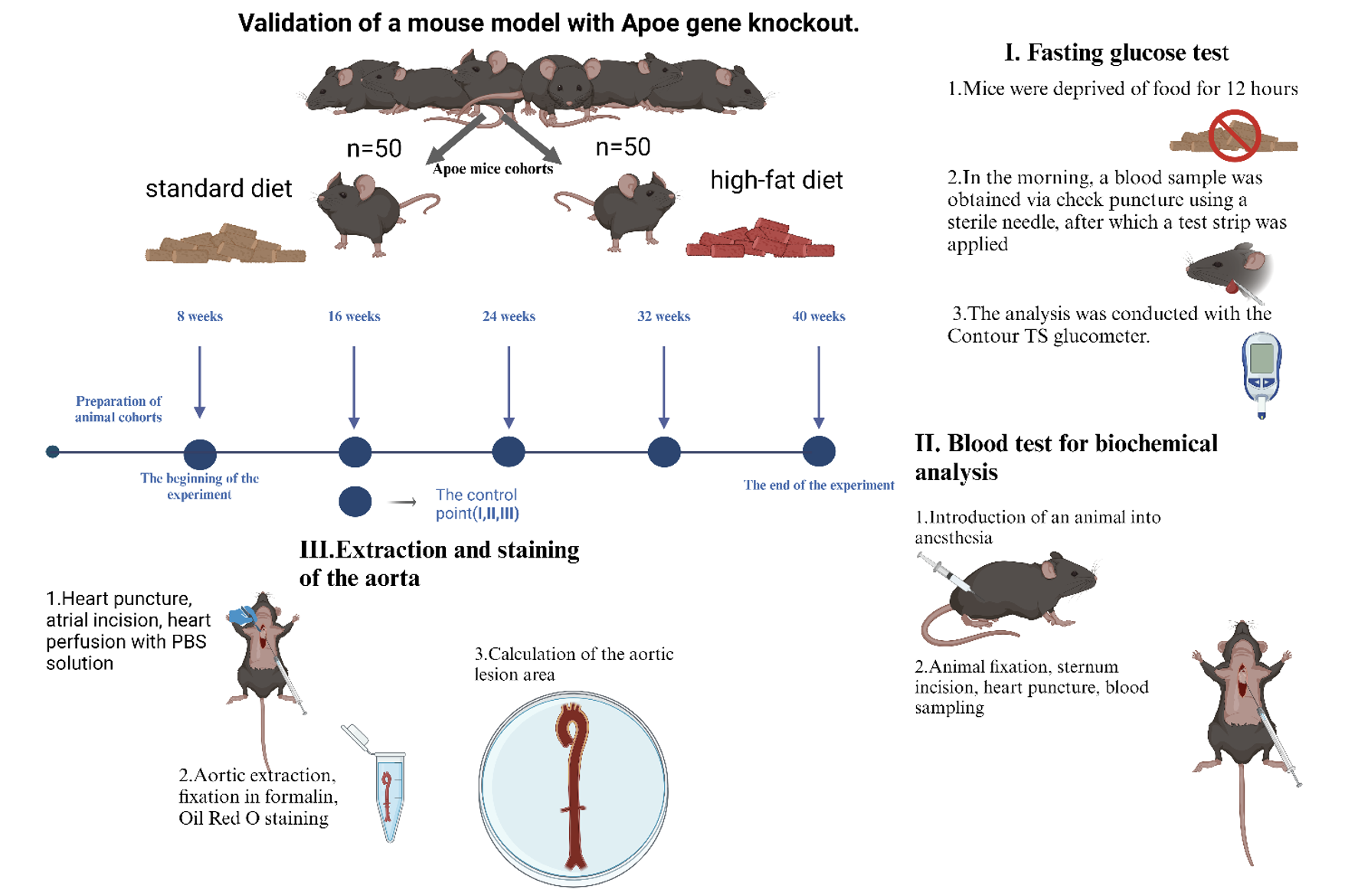Validation of a mouse model with Apoe gene knockout
DOI:
https://doi.org/10.18413/rrpharmacology.10.553Abstract
Introduction: The research focuses on the ApoE-/- transgenic mouse model. This model enhances the understanding of the mechanisms underlying disease progression and allows for the testing of new therapeutic strategies.
Materials and Methods: The study employed ApoE (-/-) knockout mice, which were bred to create cohorts of male mice. These males were divided into two equal groups, receiving either a standard diet or a high-fat diet. Analyses included lipid profile assessments, fasting glucose levels, and evaluation of aortic lesion area.
Results and Discussion: The findings revealed statistically significant differences in the ages at which disease symptoms appeared between the groups. The high-fat diet induced hyperlipidemia, leading to accelerated atherosclerosis in the aorta, aligning with existing literature.
Conclusion: ApoE knockout mice represent a promising genetic model for assessing therapeutic approaches to treat cardiovascular diseases. This model exhibits clear phenotypic manifestations of the disease and can be used for pharmacological correction of endothelial dysfunction.
Graphical Abstract

Keywords:
cardiovascular diseases, endothelial dysfunction, atherosclerotic lesions, ipid profile, high-fat dietReferences
Fan J, Watanabe T (2022) Atherosclerosis: known and unknown. Pathology International 72(3):151-160. https://doi.org/10.1111/pin.13202
Ilyas I, Little PJ, Liu Z, Xu Y, Kamato D, Berk BC, Weng J, Xu S (2022) Mouse models of atherosclerosis in translational research. Trends in Pharmacological Sciences 43(11): 920-939. https://doi.org/10.1016/j.tips.2022.06.009
Korokina LV (2023) The EPOR/CD131 heteroreceptoragonist has an endothelioprotective effect against the background of pulmonary hypertension caused by monocrotalin. Research Results in Pharmacology 9(4): 65–74. https://doi.org/10.18413/rrpharmacology.9.10057
Lechner K, von Schacky C, McKenzie AL, Worm N, Nixdorff U, Lechner B, Kränkel N, Halle M, Krauss RM, Scherr J (2020) Lifestyle factors and high-risk atherosclerosis: Pathways and mechanisms beyond traditional risk factors. European Journal of Preventive Cardiology 27(4):394-406. https://doi.org/10.1177/2047487319869400
Shcheblykin DV, Bolgov AA, Pokrovskii MV, Stepenko JV, Tsuverkalova JM, Shcheblykina OV, Golubinskaya PA, Korokina LV (2022) Endothelial dysfunction: developmental mechanisms and therapeutic strategies. Research Results in Pharmacology 8(4): 115–139. https://doi.org/10.3897/rrpharmacology.8.80376
Tabarov MS, Toshtemirova ZM, Saidmuradova RA, Hodzhaeva MH, Kurbonbekova PK, Sadyrov (2012) Physiology and pathology of endothelium. Avicenna’s Bulletin [Vestnik Avicenny] 2(51). https://doi.org/10.25005/2074-0581-2012-14-2-196-202 [in Russian]
Published
How to Cite
Issue
Section
License
Copyright (c) 2024 Lebedev PR

This work is licensed under a Creative Commons Attribution 4.0 International License.
 Русский
Русский
 English
English

